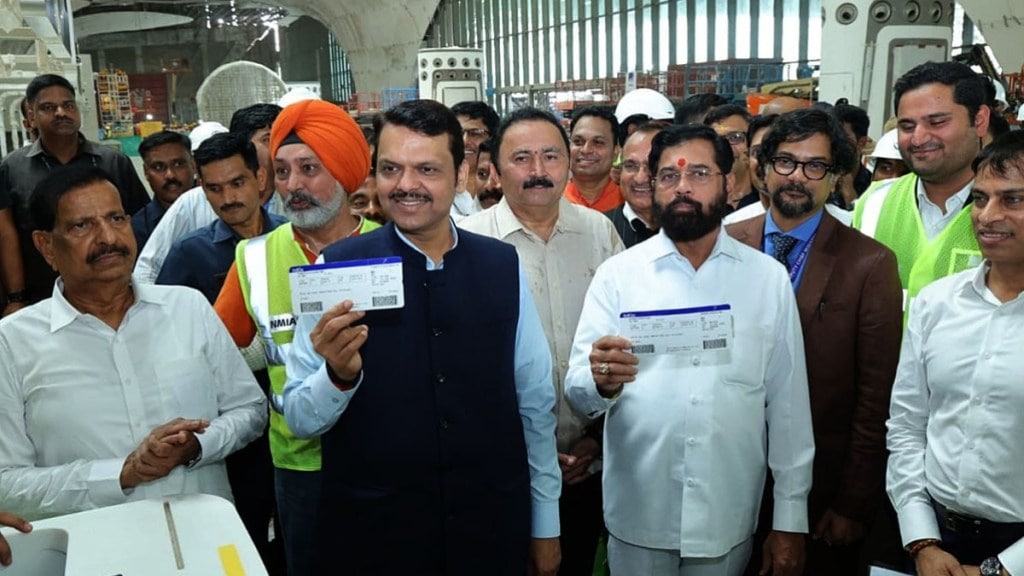Maharashtra Chief Minister Devendra Fadnavis on Saturday announced that the Navi Mumbai International Airport (NMIA) is set to begin operations by September 30, with the first passenger flight scheduled for takeoff around that time. The inauguration will be led by Prime Minister Narendra Modi, who also performed the ground-breaking ceremony for the project.
CM Fadnavis stated that 94% of the airport’s construction is done, with the remaining 6% to be completed in the coming weeks. He said authorities are working round the clock to ensure the airport is fully operational by the set deadline.
Calling NMIA the “most modern and fully-equipped” airport in India, Fadnavis said it would outpace even the Chhatrapati Shivaji Maharaj International Airport in terms of capacity and technology. Once both runways are operational, the airport will be able to handle up to 9 crore passengers annually.
One of the standout features will be the ultra-efficient baggage-handling system, with 360-degree barcode scanning to ensure accurate and speedy luggage transfers. “We’ve directed authorities to make it the fastest baggage claim system in the world,” he said.
Runway and terminal work in final stages
The runway is fully ready, and the terminal building is nearly complete, with final interior and external ceiling work underway. “Everything else is progressing rapidly,” the CM said during a press briefing after inspecting the site with Deputy CM Eknath Shinde and Minister Ganesh Naik.
Fadnavis said NMIA will be a green airport, powered by 37 MW of renewable energy. All airport vehicles will run on electricity or alternative fuels. The airport will also promote the use of sustainable aviation fuel, making it a hub for green air travel.
Connectivity plans in full swing
The CM outlined an ambitious connectivity blueprint. The Atal Setu-Coastal Road link is expected to be completed by March next year, while an elevated road from Thane is also in the pipeline. Suburban trains, metro, and water transport options are being integrated to provide easy access from all directions.
To enhance passenger experience, baggage check-in facilities in other cities are being planned so travellers can reach the airport without carrying their luggage. “This will transform the way passengers travel,” Fadnavis said.
In the second phase of development, an underground train system will connect terminals inside the airport, ensuring passengers won’t have to walk long distances. Travelators and automated mobility solutions will ensure smooth movement, with terminal bays kept within 500 metres.
Project progress and workforce
Over 13,000 workers are currently deployed at the site. Fadnavis said additional workforce will be added if needed to meet the deadline. Commercial licensing work is being carried out in parallel to ensure immediate operational readiness.
On the naming of the airport, the Chief Minister said, “The state government has sent a proposal to the Centre, and Deputy CM Shinde and I will follow it up with the Prime Minister.”
With inputs from PTI

